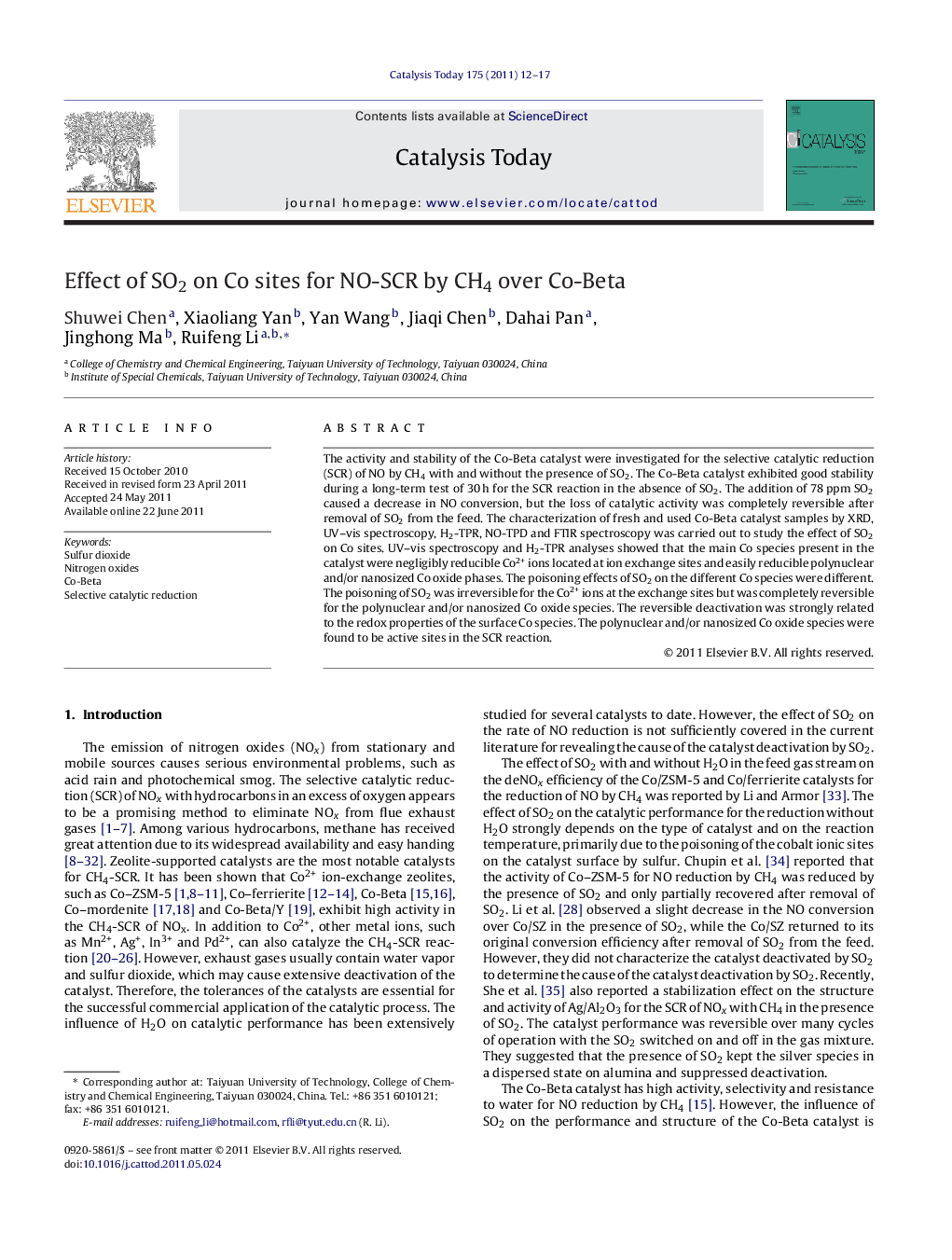| Article ID | Journal | Published Year | Pages | File Type |
|---|---|---|---|---|
| 55715 | Catalysis Today | 2011 | 6 Pages |
The activity and stability of the Co-Beta catalyst were investigated for the selective catalytic reduction (SCR) of NO by CH4 with and without the presence of SO2. The Co-Beta catalyst exhibited good stability during a long-term test of 30 h for the SCR reaction in the absence of SO2. The addition of 78 ppm SO2 caused a decrease in NO conversion, but the loss of catalytic activity was completely reversible after removal of SO2 from the feed. The characterization of fresh and used Co-Beta catalyst samples by XRD, UV–vis spectroscopy, H2-TPR, NO-TPD and FTIR spectroscopy was carried out to study the effect of SO2 on Co sites. UV–vis spectroscopy and H2-TPR analyses showed that the main Co species present in the catalyst were negligibly reducible Co2+ ions located at ion exchange sites and easily reducible polynuclear and/or nanosized Co oxide phases. The poisoning effects of SO2 on the different Co species were different. The poisoning of SO2 was irreversible for the Co2+ ions at the exchange sites but was completely reversible for the polynuclear and/or nanosized Co oxide species. The reversible deactivation was strongly related to the redox properties of the surface Co species. The polynuclear and/or nanosized Co oxide species were found to be active sites in the SCR reaction.
Graphical abstractFigure optionsDownload full-size imageDownload high-quality image (78 K)Download as PowerPoint slideHighlights► Co-Beta catalyst exhibited good stability in the SCR of NO with methane. ► The poisoning of SO2 on different Co species has different poisoning mechanism. ► The poisoning of SO2 on nanosized Co oxide species was completely reversible. ► The Co oxide species are found to be active sites in the SCR reaction.
